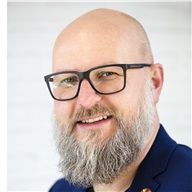Virtual lab gives access to infrastructure and expertise at European level
Those looking for a specific research facility for the pre-treatment or physical separation of waste can consult Preflex, a database that collects information regarding equipment and infrastructure from various European research institutions. Preflex is also part of the EIT RawMaterials, which seeks in this way to provide access to equipment and knowledge about raw material efficiencyand the circular economy.
The Knowledge and Innovation Community (KIC) Raw Materials
The Knowledge and Innovation Community (KIC) Raw Materials, initiated by the European Institute of Innovation and Technology (EIT) and funded by the European Commission, unites research institutes and companies to stimulate radical innovation and entrepreneurship with regard to raw materials and the circular economy. Within this collaborative context, there are several networks of infrastructure. Such a network is a database that collects information about a particular typeof infrastructure.
Kris Broos of VITO: “A dozen partners from several European countries have shared information on their infrastructure, thus creating a unique virtual laboratory. VITO currently manages two such infrastructure networks, including the Preflex network for the pre-treatment and physical separation of waste streams.”
Matchmaking
Kris Broos: “The main goal is to make very specific technologies and infrastructure easy to find. If an industrial customer has a scientific question that we are unable to answer on our own because VITO doesn’t have the right equipment, we can query the database. An online tool links our query to the extensive range of infrastructure available at one or more partners. In the case of a match, these parties can then contact us and make an offer for the use of their equipment.”
Collaboration made easier
The tool lets anyone search for a particular installation. In practice, it is mainly the research institutions themselves who will make use of this possibility. This enables them to better respond to the needs of their customers, and results in better use of capacity. The database also offers other advantages. Anja Maul of VITO: “Obtaining a better understanding of the equipment and expertise of our partners makes collaboration easier. For example, when preparing European project applications, we now know better which other institutions have complementary infrastructure and expertise and whom we can best work with. In addition, the tool keeps track of the requests that are made, which tells us which infrastructure is being widely used and the devices for which there is little demand. This allows us to better understand the needs of the market.” VITO developed the online tool, which has already been taken up by other networks.
ZeroWaste Cluster
VITO is also taking the lead in another area. Kris Broos: “There are many different networks of infrastructure. Which is why VITO, Ghent University, KU Leuven and the VTT Technical Research Centre of Finland took the initiative to collaborate, within the so-called ZeroWaste Cluster, on a number of networks that gather equipment and knowledge about the circular economy. Recent developments in resource efficiency and the circular economy have demonstrated the need for flexible and cost-effective installations. Europe has invested heavily in specific equipment and knowledge about the valorisation of complex residues and low-grade ores. The ZeroWaste Cluster provides access to these installations and this know-how streamlines communication at the level of the cluster. If a single network constitutes a virtual laboratory, this cluster can be considered a virtual institute.”


